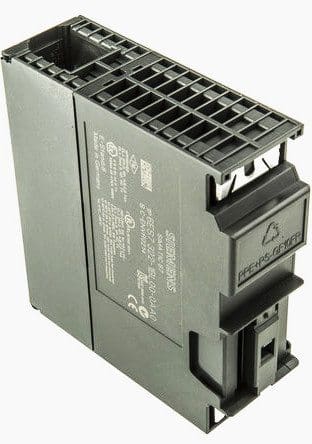PLC system maintenance
Why need for PLC system maintenance when they are designed to be easy to maintain and to ensure trouble-free operation? Well, several maintenance aspects should be considered once the system is in place and operational. Certain maintenance measures, if performed periodically, will minimize the chance of system malfunction.

This technical article outlines some of the practices that should be followed to keep the system in good operating condition.
1. Preventive maintenance
Preventive maintenance of programmable controller systems includes only a few basic procedures, which will greatly reduce the failure rate of system components. Preventive maintenance for the PLC system should be sched- uled with the regular machine or equipment maintenance, so that the equipment and controller are down for a minimum amount of time.
The following are guidelines for preventive measures:
- Periodically clean or replace any filters that have been installed in enclosures at a frequency dependent on the amount of dust in the area. Do not wait until the scheduled machine maintenance to check the filter. This practice will ensure that clean air circulation is present inside the enclosure.
- Do not allow dirt and dust to accumulate on the PLC’s components; the central processing unit and I/O system are not designed to be dust proof. If dust builds up on heat sinks and electronic circuitry, it can obstruct heat dissipation, causing circuit malfunction. Further- more, if conductive dust reaches the electronic boards, it can cause a short circuit, resulting in possible permanent damage to the circuit board.
- Periodically check the connections to the I/O modules to ensure that all plugs, sockets, terminal strips, and modules have good connections. Also, check that the module is securely installed. Perform this type of check more often when the PLC system is located in an area that experiences constant vibrations, which could loosen terminal connections.
- Ensure that heavy, noise-generating equipment is not located too close to the PLC.
- Make sure that unnecessary items are kept away from the equipment inside the enclosure. Leaving items, such as drawings, installation manuals, or other materials, on top of the CPU rack or other rack enclosures can obstruct the airflow and create hot spots, which can cause system malfunction.
- If the PLC system enclosure is in an environment that exhibits vibration, install a vibration detector that can interface with the PLC as a preventive measure. This way, the programmable controller can monitor high levels of vibration, which can lead to the loosening of connections.
2. Spare parts
It is a good idea to keep a stock of replacement parts on hand. This practice will minimize downtime resulting from component failure. In a failure situation, having the right spare in stock can mean a shutdown of only minutes, instead of hours or days.
Main CPU board components should have one spare each, regardless of how many CPUs are being used. Each power supply, whether main or auxiliary, should also have a backup. Certain applications may require a complete CPU rack as a standby spare.
This extreme case exists when a downed system must be brought into operation immediately, leaving no time to determine which CPU board has failed.


3. Replacement of I/O modules
If a module must be replaced, the user should make sure that the replacement module being installed is the correct type.
Some I/O systems allow modules to be replaced while power is still applied, but others may require that power be removed. If replacing a module solves the problem, but the failure reoccurs in a relatively short period, the user should check the inductive loads. The inductive loads may be generating voltage and current spikes, in which case, external suppression may be necessary.
If the module’s fuse blows again after it is replaced, the problem may be that the module’s output current limit is being exceeded or that the output device is shorted.
Reference // PLC Start Up and Maintenance by Industrial Text & Video Company











So helpful, this is a great explanation
Tenho acompanhado suas postagen, acho voce muito inteligente, sou estudante de eletrotcnica e meu sonho e trabalhar/estagiar em uma empresa assim, com pessoas como você.